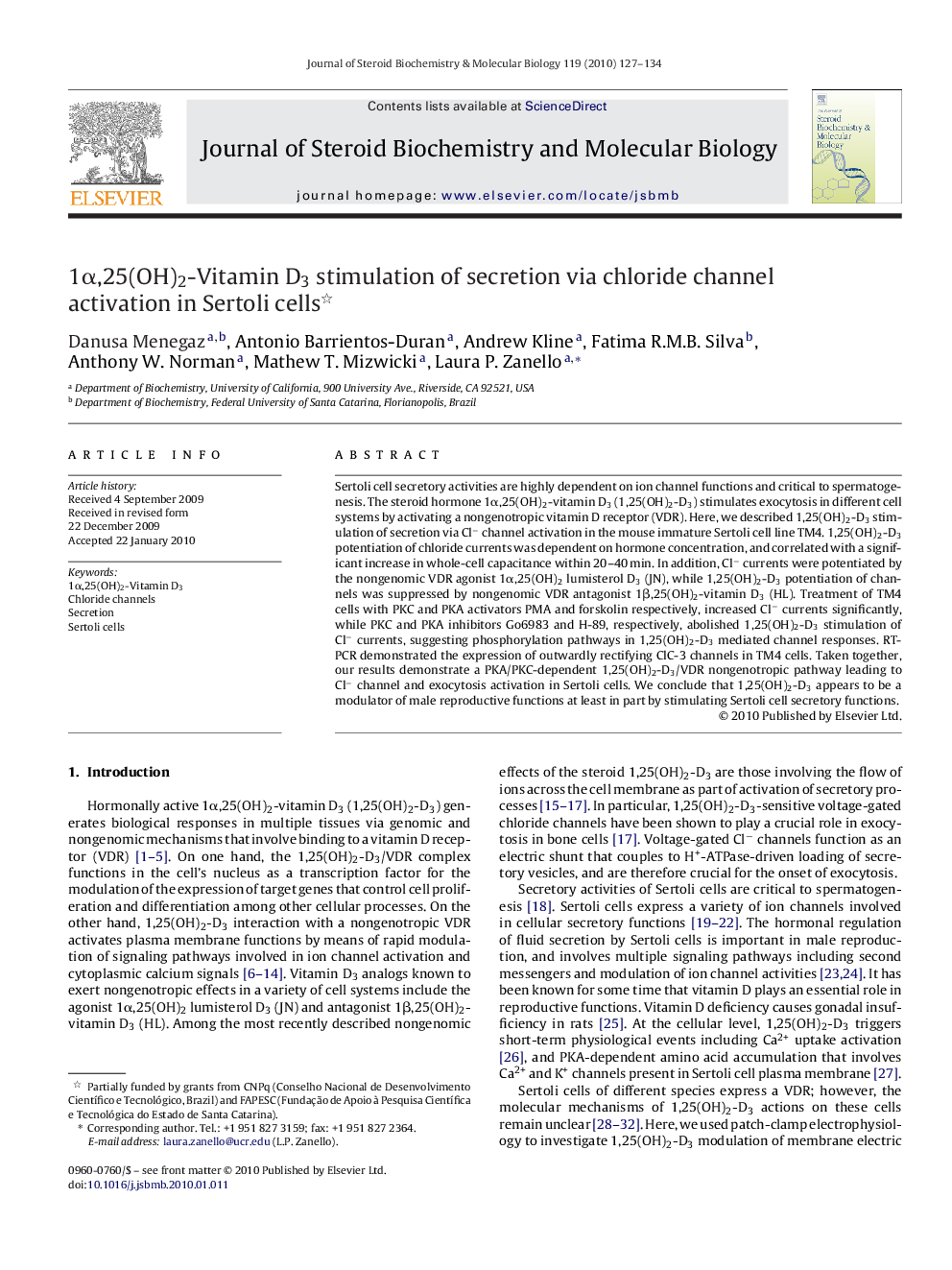| کد مقاله | کد نشریه | سال انتشار | مقاله انگلیسی | نسخه تمام متن |
|---|---|---|---|---|
| 1992028 | 1541047 | 2010 | 8 صفحه PDF | دانلود رایگان |

Sertoli cell secretory activities are highly dependent on ion channel functions and critical to spermatogenesis. The steroid hormone 1α,25(OH)2-vitamin D3 (1,25(OH)2-D3) stimulates exocytosis in different cell systems by activating a nongenotropic vitamin D receptor (VDR). Here, we described 1,25(OH)2-D3 stimulation of secretion via Cl− channel activation in the mouse immature Sertoli cell line TM4. 1,25(OH)2-D3 potentiation of chloride currents was dependent on hormone concentration, and correlated with a significant increase in whole-cell capacitance within 20–40 min. In addition, Cl− currents were potentiated by the nongenomic VDR agonist 1α,25(OH)2 lumisterol D3 (JN), while 1,25(OH)2-D3 potentiation of channels was suppressed by nongenomic VDR antagonist 1β,25(OH)2-vitamin D3 (HL). Treatment of TM4 cells with PKC and PKA activators PMA and forskolin respectively, increased Cl− currents significantly, while PKC and PKA inhibitors Go6983 and H-89, respectively, abolished 1,25(OH)2-D3 stimulation of Cl− currents, suggesting phosphorylation pathways in 1,25(OH)2-D3 mediated channel responses. RT-PCR demonstrated the expression of outwardly rectifying ClC-3 channels in TM4 cells. Taken together, our results demonstrate a PKA/PKC-dependent 1,25(OH)2-D3/VDR nongenotropic pathway leading to Cl− channel and exocytosis activation in Sertoli cells. We conclude that 1,25(OH)2-D3 appears to be a modulator of male reproductive functions at least in part by stimulating Sertoli cell secretory functions.
Journal: The Journal of Steroid Biochemistry and Molecular Biology - Volume 119, Issues 3–5, April 2010, Pages 127–134